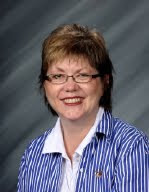In his book Ordinary Resurrections: Children in the Years of Hope (2000), educator and activist, Jonathan Kozol recalls the time that he spent in the Mott Haven section of South Bronx. The students were virtually all black and Hispanic. In the book, Kozol expresses a faint sense of hope rarely found in his works. He describes a school population where many students have asthma because of the inordinate number of garbage dumps in the area. Knowing someone with AIDS is common. In spite of a system that he labels an “apartheid education,” he praises the after-school program held at a neighborhood church.
Five years later, in the Harper’s article, “Still Separate, Still Unequal: America's Educational Apartheid,” he describes a return to hopelessness and an educational system that is taking a backward glance.
Kozol describes the physical environments that ignore the basic needs of students. Insufficient bathroom facilities, dirty halls and classrooms, and too few desks and tables barely fulfill the needs on the bottom rung of Maslow’s Hierarchy of Needs; physiological needs like thirst, hunger, and bodily comfort must be addressed before any other growth can take place.
Even if the basic needs were met in the schools that Kozol describes, it still would be far from making headway in the education of their children. The inequities in the budgets and salaries of the rich and poor schools of New York City are devastating. The bleak desperation of the school personnel, parents, and students in the poor districts can only be described as demoralizing.
The attitudes of the faculty and students in these schools seem only fitting for the situation. When Kozol interviewed students at MLK High School, one 16-year-old girl stated that “If people in New York woke up one day and learned that we had gone, had simply died or left for somewhere else . . . they would be relieved.”
Most of the students in my school would not share this feeling. However, I just can’t shake the notion that with all that we provide our kids, I have no doubt that we have students who feel just as hopeless and invisible as those in the article. I’m sure we have some students who believe that the school would be “relieved” if he or she just disappeared. Sadly enough, in some cases, they would be right.
The teachers described in the article seem to represent the attitudes of teachers everywhere. All schools have expert teachers that are passionate, resilient, and hopeful. Most schools also have teachers that are lazy, disconnected, unprepared, and out of their element. The extremes in teachers' attitudes are only magnified in Kozol's schools.
